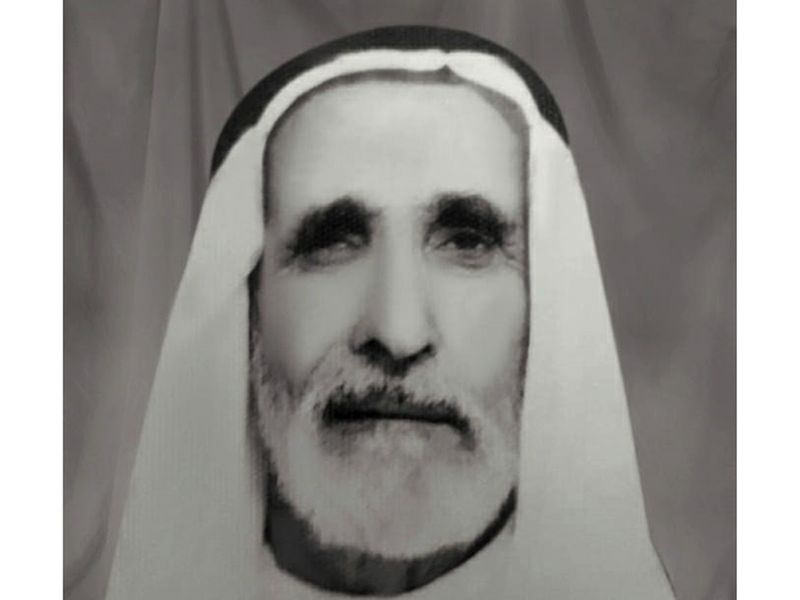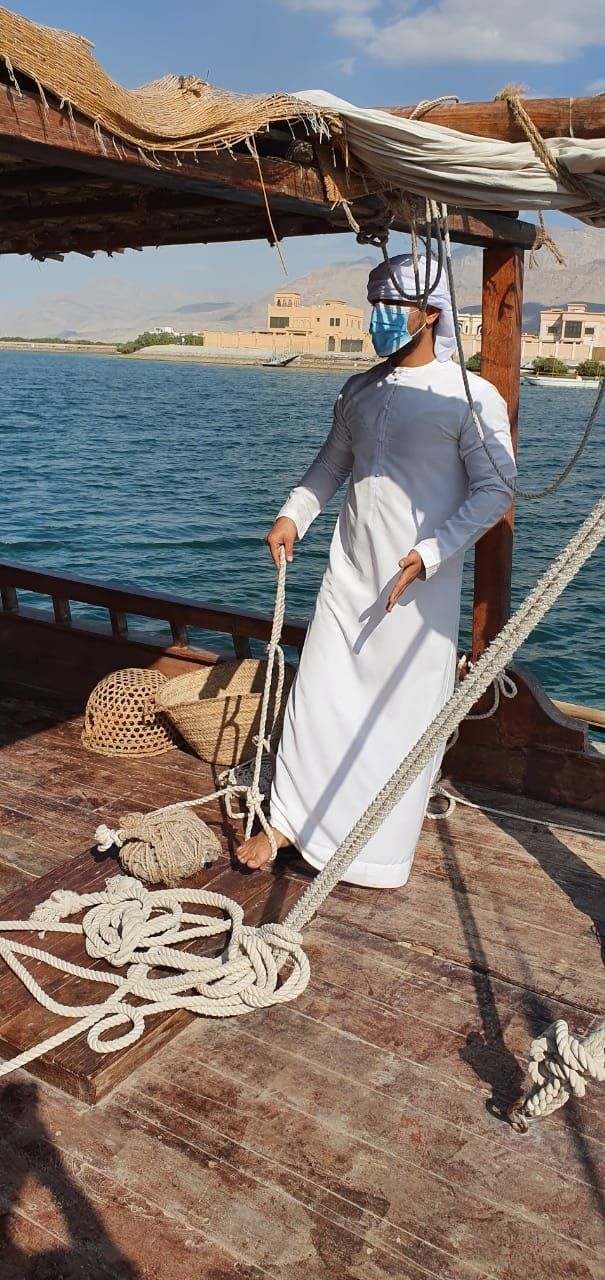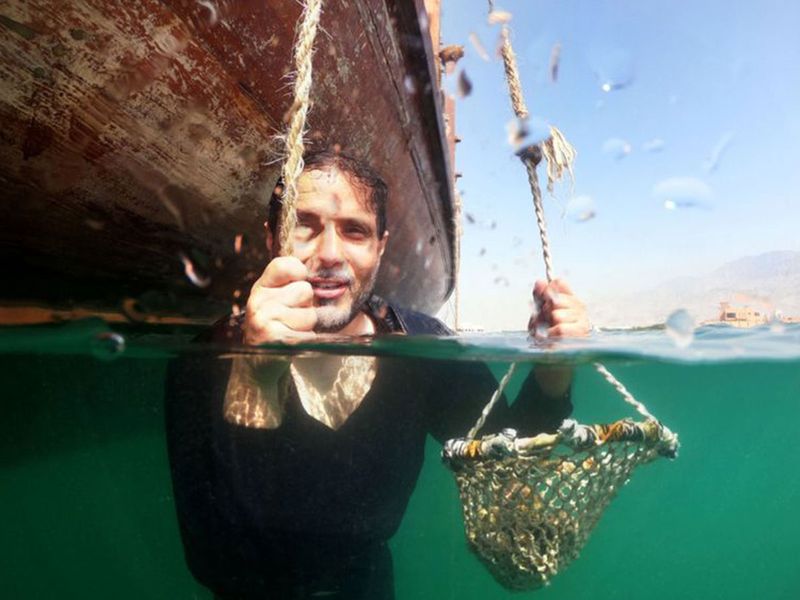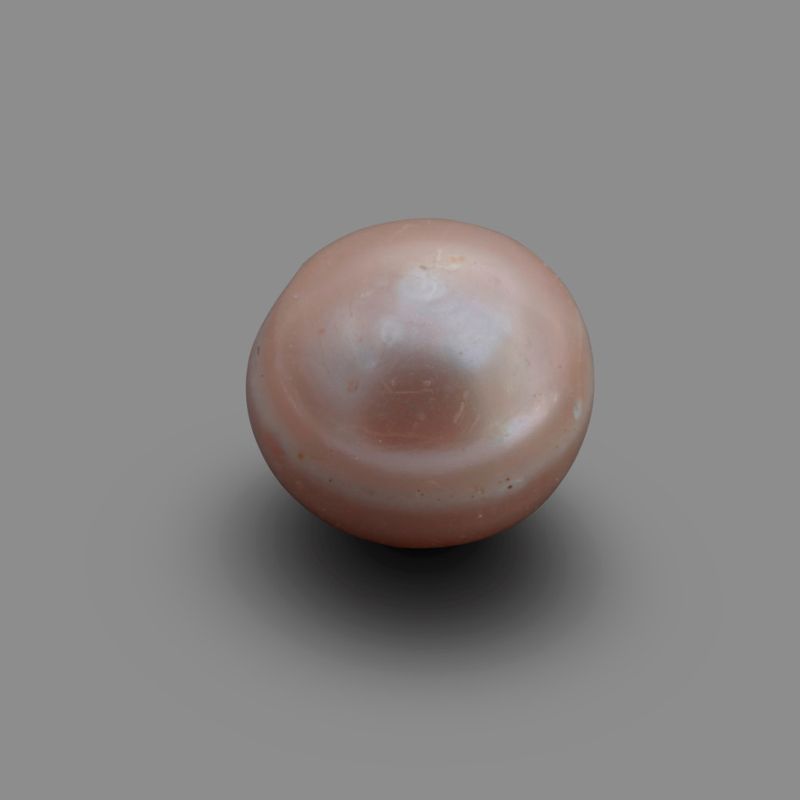At first, there was nothing as far as the eyes could see – just an unending blanket of blue, shivering under the nips and tucks of the wind. Then suddenly, from underneath the surface of the sea, a fist would appear. The water would ripple as the diver gasped for air and hung on to the side of the boat. And then a conversation would break out. “First question when the captain saw a hand raised was: ‘What have you got?’,” explains Emirati Abdulla Al Suwaidi.
The diver would reply with: “What are you going to give me for it?”
They’d haggle – for dates, for rice and for money - until a price had been agreed upon. Only then would the diver get back on the boat.
On UAE’s 49th National Day, Al Suwaidi is recalling a tale his grandfather, Mohammed bin Abdulla Al Suwaidi, used to tell him about an old UAE specialty, pearl diving.
The late Mohammed bin Abdulla was the last pearl diver of the UAE and inculcated a love of the sea and all it embodied in his grandson.
Al Suwaidi, who has established a pearl farm in Ras Al Khaimah, recalls his introduction to deep waters as something out of a fairytale. “I lived in a coastal village - Al Rams [in Ras Al Khaimah] - it’s a very small city surrounded by beautiful mountains and the only place you can go to is the sea. [I loved my grandfather and was very attached to him]. My grandfather in 1970s, he was in his 70s and I grew up seeing him every day walking out and going to a place [I didn’t know about],” he says.

“Luckily one day he took me along. [He] walked to the shore with me, holding my hand, [before] taking off his kandura and trousers. [He asked] me to watch his stuff [before] walking into the sea and disappearing in the water. It was like magic. I can’t forget this and with [this moment], my journey started of exploring what exactly he was doing and how he does it.”
Seafarer’s trick
For Mohammed bin Abdulla, it was a trick of the trade – pearl diving could mean having to hold your breath for 2-3 minutes at a time while wading into the recesses of the sea. The men who would head out for the catch would do so for about four months in the year, away from family, friends and civilization as we know it all to find that elusive pearl. Each day after a morning of coffee and a few dates they would armour themselves for what was to come: leather finger covers to stop jagged edges from cutting open flesh as they searched for oysters in the big blue and nose clippers to keep the water at bay. They would then tie a stone to their foot, using it as an anchor to drag them into the murky depths of the sea, where they would need to navigate by distilled sunlight and their wits.

“It’s scary, you don’t know where you are going. You are going fast, with a stone talking you to the bottom. There is no Google used so we have to use our eye vision to see. So it’s like going into danger. But, once you break that fear barrier, you would love to do it again and again and again, and never stop,” explains Al Suwaidi, who is an avid diver himself.
The risk is something he’s witnessed himself. His grandfather, he says, fed his imagination with stories from the sea. But he was a walking lesson in things that could go wrong. “The most important thing I’ve seen as evidence in my grandfather is [his] right toe had shifted to the other side. So for me, as a child seeing him in the water, I used to believe he is half-man half-fish.
“But then I learned that he has a story of going down to the sea and stepping onto a sting ray. And this sting ray had hit him with a poison tail and shifted his toe to the other side.
The nerves in the toes [were] no longer active,” says Al Suwaidi.
In Pictures

And it is this balance of adversity, of peril and reward that he grew up with. “The whole thing that shaped up my father and his generation and their ancestors is just a beautiful blend of adversity and prosperity,” says the Emirati. “Adversity comes from the danger of the sea, from disconnecting from families for about four months. Sometimes they are for days and days diving and nothing is showing [up]. Out of 1,000 [oysters] you get 10 pearls. Sometimes it takes them days to get this, sometimes months - changing from place to place with the frustrations and then from these oysters comes a beautiful pearl.” And the struggling together and striving for that one common goal set a sort of social structure both off and on land, he says.
Pearling became scarce in the 1900s once oil was discovered, but most prominent Emirati families can still find a connect to it. “ We were globalized even before the set up of the UAE…the [people] of each civilisation have passed through it and spoken highly of the land,” he explains. And that’s thanks to the pearl.
Bring in the young people

“The oldest pearl found was in Marawah Island in Abu Dhabi and the second oldest pearl found was in Umm Al Quwain,” he says stressing the importance of explaining this history to the next generation. “We have to teach our children not only about the story of the pearls but also about the details and how it happened.”
“If you look at where the UAE is now, the position in the GCC, we are considered to be at the top. If you look at the world we are at the near top 10. So what inspires our leaders to get [these spots] - it’s their rich connection with history. It’s the power of the pearl,” says Al Suwaidi.
UAE preserves its heritage. “Many people think it’s [pearling] is demolished and finished. No, there are plenty of oysters living in the sea. I dive everywhere in the UAE. Everywhere I located the oysters. And not only that, I still collect natural pearls. So this is an evidence of continuity. It’s an evidence of ability,” says Al Suwaidi.
Lauding the UAE’s efforts, he says: “ To give a proof of how our environment is great in the UAE…If [it hadn’t been], I would not have the [pearl] farm. Oysters would not survive with chemical dumping [or an unhealthy eco-system].”
“I walk as an Emirati very proud - wherever I look around, biology, environment, social life, it’s a perfect scenario. What makes UAE perfect? Long-lasting history.”
It’s a learning he reinforces every time he is at sea, trying a stone to his leg and diving in…leaving nothing behind but a blue horizon reminiscent of an old time and a vision full of possibilities.
https://ift.tt/2VrASpc






No comments:
Post a Comment